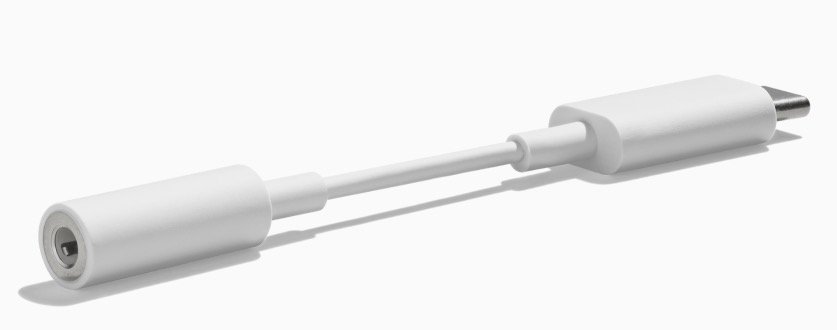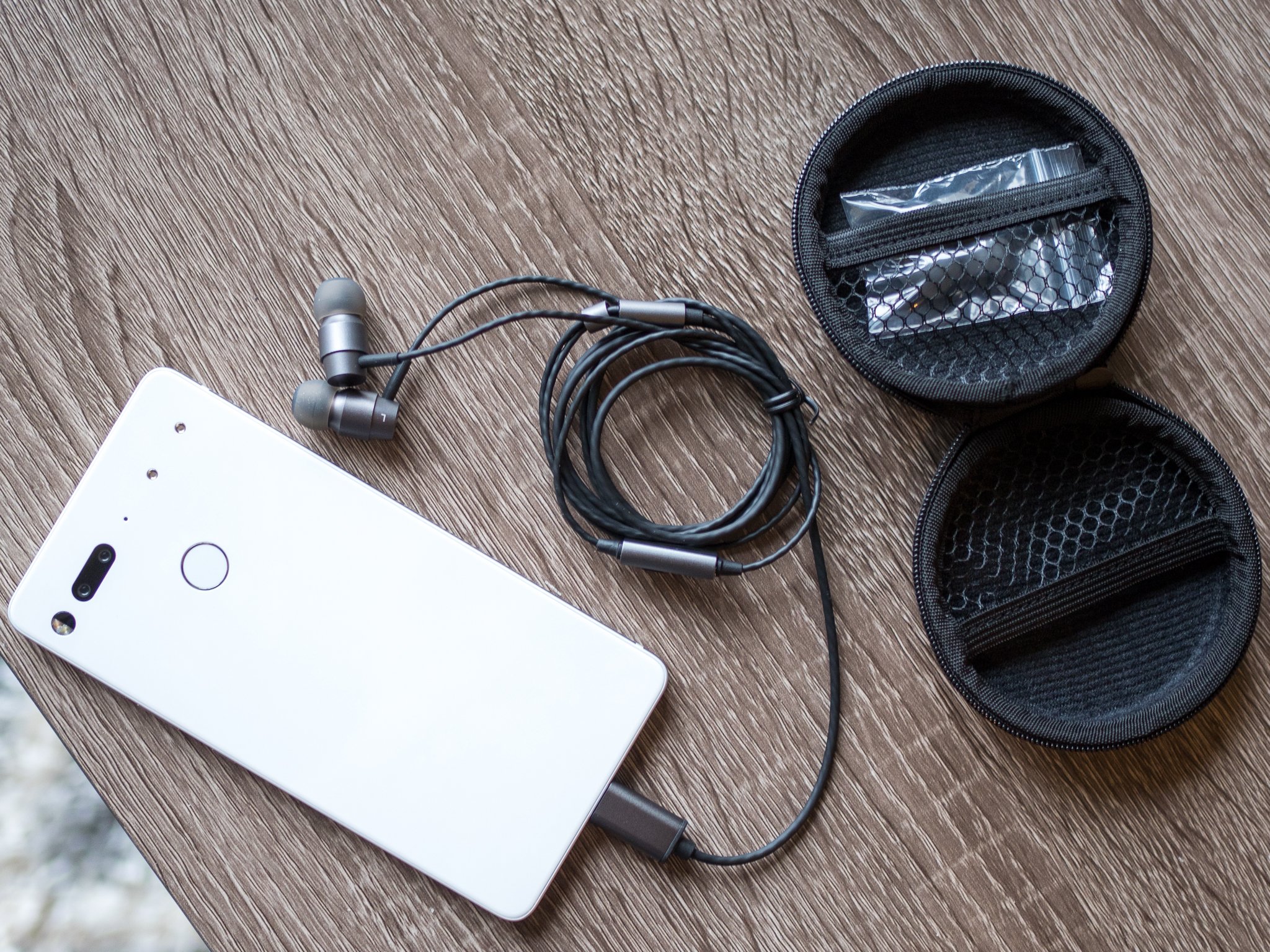The port on the phone isn't the only difference, but some things are the same as they have always been.
There's a good chance the next phone you buy will support USB-C audio, even if it still has a "regular" 3.5mm headphone jack. That means we'll soon be seeing more headphones that have a USB-C connector because that's how this circle works — support a thing and companies will make the things. But there's a lot of confusion about using a USB port for audio and what's different than how we've been doing it for years. If you're into electronics and love getting down and dirty you can take a look at the USB-C audio specification (direct download link) but for the rest of us here's what you need to know.
New port, same parts
Audio of any type that can be played back on our phones needs to have a handful of specific parts to work. Moving from a 3.5 mm jack to a USB-C port doesn't change that. Where those parts are, though, can change a lot.
You need a DAC (Digital to Analog Converter), an amplifier, and a speaker(s) to turn files into sounds on your phone. Speakers work by moving and creating a pressure wave that our eardrums pick up, and the moving parts use electromagnetism to do their thing. That pressure wave corresponds with whats called an analog signal and the variation of that signal is what creates different tones and sounds. In a nutshell, the signal waveform is what a speaker uses to vibrate, that vibration sends pressure waves to our eardrums, and they vibrate in time inside our head to make the sound. Biological magic aside, it really is that simple. If you look at an analog audio waveform and hear the sound, you can see how things line up.
Making a copy of a copy of the original audio is complicated and needs the right parts.
Files on our phone or files streamed through the internet are digital. That means they are a bunch of binary (a counting system that only uses zero and one) bits that are packed together so a computer can read them and know what to do with them. Yes, your phone is a computer! Digital files do not have any type of waveform that a speaker can use to create sound. We need something to convert them.
Complex algorithms are able to take recorded audio, which is in an analog format, convert it to a digital format like a .mp3 file for storing on a computer, and convert it back to analog when played. This data needs to be sent through the DAC for conversion to a proper waveform and then sent through an amplifier so that the waveform is made strong enough for headphones to use. There are some pretty cool things that scientists and engineers can do to "make" sound, but every phone and every portable audio player and every set of speakers need this process.
More: Does my phone have a DAC? Explaining DACs and Amps in smartphones today
A phone like the LG V30 has a very good DAC and a very good amp and a 3.5 mm headphone jack. An app plays the file, the DAC converts it to analog, the amp boosts the signal, and the 3.5mm headphone jack sends it out to whatever you have plugged in. Every phone with a 3.5 mm headphone port works exactly the same way, even those without the promise of a premium sound experience. A phone that uses the USB port for audio might not work this way, though.
A little more legroom
For an explanation, let's turn to Bluetooth. You don't need to physically connect Bluetooth headphones to anything, so things are built differently even if they are using the same parts. Your Bluetooth headphones have their own onboard DAC and amplifier. The digital file is sent from your phone and all the conversion is done on your head. At first, this can feel a little complicated but it's not really. The same process is used and the only difference is where the components are. Now let's get to USB.
There are two ways to send audio data through the USB port, and I'll bet you can guess them: Analog and digital. Analog audio can be converted with an onboard DAC and amplifier inside your phone then sent out through the port to a passive set of headphones or an adapter. For this to work, the device needs to support whats called "audio accessory mode" and the headphones or adapter are just "dumb" connections that pass along the signal.
If you are using an active set of headphones or adapter, the audio signal being sent through the USB port is still in its digital form. That means the DAC and amplifier are inside of the headphones or the dongle, and the conversion is done there instead of the phone.
Buying USB-C headphones can be torturous; get advice from someone who has been there.
This can get messy. You need to make sure that you're using the right "thing". If you are using a passive adapter or headphones, your phone needs to support audio accessory mode and many don't. The mess is because most dongles, adapters, and headphones aren't labeled with how they are built and we don't know if they are active or passive.
The Pixel 2 has an onboard DAC embedded in its Qualcomm Snapdragon 835 SoC, but audio accessory mode isn't supported. That means you need a pair of active headphones or an active adapter, like the dongle that came with the phone. The HTC U11 and Essential Phone are the same, but Motorola makes phones that do support passive headphones through the USB port. All phones should support an active adapter or headphones, though.
One more thing: Not all active USB audio products will work with all phones because manufacturers are able to use several new wires in the USB-C connection for extra features, like HTC did with the U11's earbuds to provide active noise cancellation.
Before you buy any USB-C headphones or an adapter, find out if it works with your phone.
Is USB-C audio better?
Yes, but also no. The actual sound isn't better just because the port has changed. As mentioned above, you still need to use the same components and manufacturers are free to choose from high-end gear or budget gear. USB-C doesn't make anything better here, it just changes the connection.
But there are some benefits. The USB Type-C Specification 1.0 was released by the USB-IF (USB Implementers Forum) in 2014 along with the USB 3.1 specification. While not required, USB-C has plenty of tricks up its sleeve for the way it can communicate and connect. A USB-C port can support these things simultaneously:
- Audio accessory mode For passive audio or passthrough audio.
- Alternate mode This uses some of the wires in the USB connection for direct device-to-host transmission of alternate data protocols; as of 2016 this includes Thunderbolt, DisplayPort, Mobile High-Definition Link, and HDMI.
- Billboard Device Class This communicates to supply details of Alternate mode connections or to simply provide information about the connection or the device connected at either end.
- Audio Device Class 3 specification This sends analog or digital (or both) audio data through the port.
- USB Power Delivery This not only provides "fast charging" over USB, but it also supports DRP (Dual Role Power) to fast charge your phone and supply power to a connected device at the same time.
The USB Type-C specification doesn't require these things, but they are supported. That means you can do a lot more with the USB-C port on your phone that listen to music or charge it if the company making it wants to include any of these extra modes. Some are great — HDMI or DisplayPort through the Alternate mode specifications means you can connect your phone to an AV Receiver for premium sound and mirror the screen. And charge it, and send data or charge another USB-C accessory with the right cable all at the same time.
Android, along with Chrome, Windows, macOS, and Linux all fully support the USB Type-C specification. While the audio won't necessarily sound better because it's using the USB-C port, there are a lot of cool things that can be done while we are listening. Too bad no manufacturer seems to be implementing them even though they are all quick to point out the benefits of losing the headphone jack.
It's coming
Some phones line LG's V series will likely support the 3.5 mm headphone jack for the immediate future. That's great for people who have other audio gear that uses the old standards and want their phone to be a great sounding music player. But the move to USB-C for audio has happened, and eventually all portable (and possibly standalone) audio will use USB-C. That's because it benefits the companies who make the products we love.
Omitting the headphone jack does two things for a company designing a phone. It gives them a little more space and saves them some money — two things designers love.
When you aren't using a 3.5mm jack, you don't have to make the phone as thick and have a few square millimeters of footprint space on a circuit board to put other components. With AI and Machine Learning also being a thing, there are multitudes of tiny parts that need a home somewhere on a circuit board and now they have one. The headphone jack itself isn't very expensive (though every penny counts), but if a company is not supporting any type of passive or passthrough audio connection over USB-C it doesn't have to design, build, and solder in an amplifier for the signal. That can be a significant saving for the cost of making a phone from beginning to end.
Some of us will miss the 3.5mm jack. I know I will because I love my favorite headphones more than the phone or player they connect to. But benefits are there for users if companies would choose to implement them.
Update: April 2018: This post was updated and checked against the current USB Type-C specifications.
from Android Central - Android Forums, News, Reviews, Help and Android Wallpapers https://ift.tt/2F6HFeH
via IFTTT




No comments:
Post a Comment